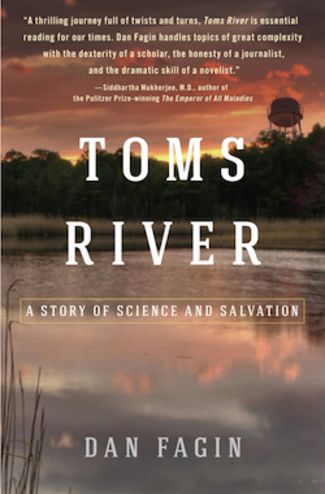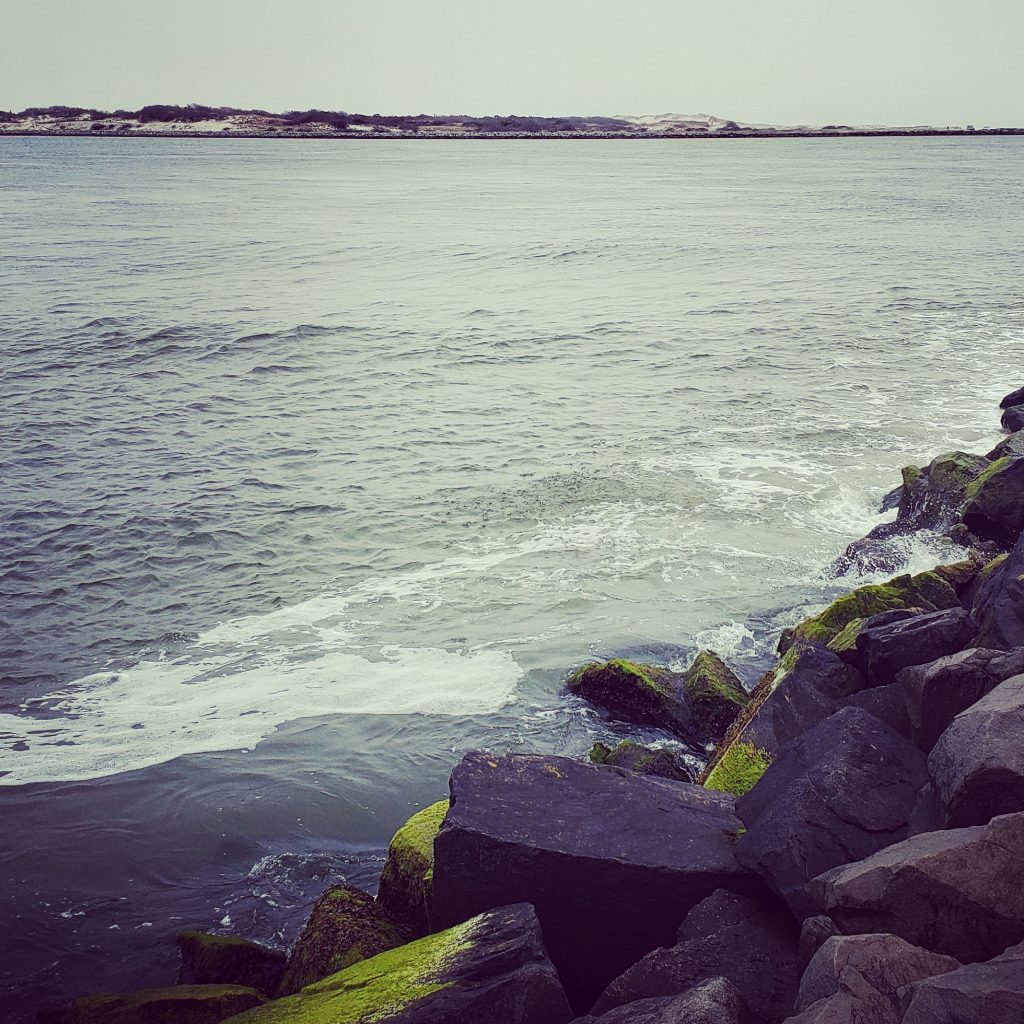Environment, Epidemiology, and Economy
Just in time for Earth Day, I just finished Dan Fagin’s 2013 book, Tom’s River: A Story of Science and Salvation, which I picked up in advance of a trip to the coastal hinterlands of New Jersey for a wedding a couple of weeks ago.
The book covers the life and death of the chemical industry in Tom’s River, New Jersey, beginning in the postwar economic boom of the 1950’s, when men were men, women were women, and progress was suburban sprawl and Good Jobs. Fagin traces the history of dyemaking and chemical production in the United States through the development of industry along sources of freshwater. New Jersey, hitherto a mostly rural landscape, was the perfect venue for such development to supply industrial powerhouses of New York, Philadelphia, Trenton, Newark, and elsewhere. The Tom’s River Chemical Company, owned and operated by the Swiss Ciba-Geigy corporation, set up shop in the town in 1952, providing hundreds of jobs over decades of operation, and was more or less the entire genesis of the town we now know (which isn’t really a “place” but more a patchwork of strip malls and housing). The book chronicles the origins of the town into the demise of its lifeblood chemical industry and eventual attainment of Superfund status.

Fagin’s book is excellent journalism, but it also covers the rich and sordid history of the topic of environmental health or, as he refers to it in one section, environmental medicine. Beginning with Hippocrates and the dubious science of yore, Fagin continues into 15th century with the cantankerous Swiss physician Paracelsus, who is widely credited as the father of toxicology, and onward to the origins of epidemiology in 19th century London, coincidentally around the same time modern dyemaking was invented.
While the toxicity of dyes has long been known, Fagin points out that throughout both the 19th and 20th centuries, reluctance to challenge the economic supremacy of manufacturing seemed to trump concerns about things like the widespread incidence of bladder cancer known to be correlated strongly with the dye manufacturing process. The toxicity seems totally logical to even a reader completely unfamiliar with aniline chemistry: You’re basically distilling chemicals out of coal tar or oil and they become vivid purples or pinks. In the 19th century, this was the bee’s knees, because dyes used to be crazy expensive, and now could be produced at industrial scale. Unfortunately, this not only put to use a bunch of pretty hideously toxic chemicals like benzene, toluene, nitric acid, and sulfuric acid, it also produces a large amount of waste materials– like pyridine, a foul-smelling, hazardous byproduct of coal tar. Stories in the book chronicle workers who shoveled substances like pyridine without masks. This occurred in Swiss-owned factories in Cincinnati before they relocated to Tom’s River.

The massive amount of waste created an incentive to spawn what Fagin essentially notes as an industry cluster of waste disposal. Ciba-Geigy had begun storing drums of material in unlined, open pits, but these began to leak and were absorbed into a porous, sandy soil, eventually contaminating groundwater. More waste still– millions of gallons, over decades- was diluted with potable water and pumped out to sea. At the same time, Fagin paints a portrait of a motley crew of waste disposal characters, named only as Sharkey and Colombo, who worked for the town dump in 1971 and made a deal with one Nick Fernicola, a waste hauler working for Union Carbide, to dump that company’s waste from a nearby plastics plant on land leased from a local farmer. Chemicals started to leak into the soft, sandy soil, further contaminating a number of the wells in Tom’s River’s decentralized water pumping system. This site, the Reich Farm, later became its own Superfund site.
Fagin does a great job of chronicling both the enormously challenging, technical work of the epidemiology that went on to figure out whether Tom’s River did indeed indicate the presence of a cancer cluster, but also the human impact that resulted from the environmental contamination. I don’t want to give too much of it away, but it raises a lot of interesting questions about the role of the State in managing the balance between economic development and environmental protection.
It also raises questions about the layers of alienation or anonymization in the process of business. If Union Carbide contracts with a waste hauler like Mr. Fernicola, it’s clear that the latter cannot bear the financial liability when millions of dollars of damages are done. But it is too easy for a company like Union Carbide to disclaim responsibility, as they tried in Bhopal in 1984, arguing that the owners of the plant were a subsidiary and therefore a separate company. Think about things like the US Sarbanes-Oxley Act, which require a CEO directly to sign off on financial statements– should we not have the same regulation for things like, say, a companywide environmental report that indicates disposal of highly toxic waste?
The sites were eventually shut down and remediation efforts begun, but not without dozens of some-yet-unexplained illnesses including tragic, terminal cancers in young and infant children, cancers in adult workers, birth defects and fertility issues. Ciba-Geigy got out of the chemical business, for the most part, as globalization has shifted production to parts of the world that lack protections for environment and workers, and was subsumed into a series of corporate mergers and rebrandings that ended up as part of, variously, Sandoz (1996), Novartis (its successor company, essentially), and BASF (2009). Union Carbide was bought by Dow (2001), the latter inevitably trying to erase the name of the former from its brand following the years of litigation and furor over the Bhopal atrocity in December 1984. Similar litigation drew in the likes of the subject of A Civil Action, lawyer Jan Schlichtman– this book is also worth a read (I kind of hate John Travolta because I think he’s creepy or I would suggest the film, too). Cleanup continues to this day, and the Reich Farm site, off Route 9, is currently being debated for proposed new development.
There isn’t much left of the Tom’s River Chemical site. You can still go there, though– it’s tucked away off a windy road through the pines. Once you get away from the strip malls and tract homes, it’s a beautiful landscape, where you can still see sunsets over the marshes and lakes (as pictured in the book’s cover), and you can almost forget that things like this happen in a modernized country. But it’s essential for us to remember how such a complete mess of bad decision-making and a refusal to demand accountability– from corporate actors and governments alike at local, state, and federal levels- led to the unnecessary tragedies in this ordinary American town.


